Cloud-based fuel delivery app!
Well, in this competitive environment, it is important to identify the advanced technologies as per the trends and then implement them in your customized app.
The on-demand cloud-based fuel delivery app developes a platform for the users to order fuel directly for their vehicles, eliminating the requirement for visiting the gas or fuel stations.
Want to know more about the same?
Here we will begin with market stats, trends, reasons, steps to develop a cloud-first fuel delivery app, costs, and much more.
Let’s evaluate the details.
Market Overview and Trends
When you decide to either enter the industry or include any new technology, it's essential to know about the market.
With the changing fuel delivery app trends, you can learn about the changing use of technologies and their implementation in the app.
Let’s learn more about the fuel delivery market stats and other trends.
-
- The Global mobile fuel delivery market size was valued at USD 5.06 billion in 2024 and is further expected to reach USD 8.75 billion by the year 2032.
- The market is estimated to reach USD 5,841.3 million in the year 2025, this is projected to grow to USD 11,927.6 million by the year 2035, reflecting a CAGR of 7.4% over the forecasted period.
- The automotive fuel delivery system market is projected to reach $2.86 billion by the year 2032, growing at a CAGR of 6.5%.
- However, the on-demand fuel delivery market will be worth USD 251.2 million in the year 2024, which will expand at a compound annual growth rate of 18.20% from the year 2024 to 2031.
With this growing market of fuel delivery apps, multiple technologies are useful to increase user satisfaction and reach potential users. Thus, it is essential to include advanced and latest technologies when you develop a fuel delivery app.
Similarly, the use of cloud technologies ensures scalability, real-time data processing, leading to cost reductions, efficient route optimization, which results in enhanced customer satisfaction.
Want to know more about the use of cloud technologies and their implementation in the app?
Let’s discover more in the given section.
Why Choose a Cloud-First Strategy?
Wondering about the reasons for selecting the cloud-first strategy?
Here are some of the points that you cannot ignore.
1. Scalability and Flexibility
The cloud infrastructure allows your app to scale effortlessly as your customer base increases. Additionally, these technologies help enterprises to grow and adapt to the diversified market conditions.
2. Enable Real-Time Data Access
The cloud platforms store all data in a centralized form, as well as ensure instant synchronization between the users, drivers, and administrators. With the combination of diversified factors, including remote storage, flexible resources, and efficient data processing.
3. Improves Automation
With the help of cloud-based platforms, you can enable automated order assignment to drivers, route optimization, and real-time tracking of deliveries.
The use of cloud technologies in fuel delivery apps will reduce manual effort, result in minimizing errors, and ensure resource allocation.
4. Data-Driven Insights and Personalization
Through cloud-based technologies, you can enable the fuel delivery companies to analyze customer data, identify trends, and offer personalization.
These are the mobile apps that leverage cloud computing along with the internet to enable the users to order fuel seamlessly.
5. Offers Enhanced Security
The cloud technologies enhance the security of fuel delivery apps through several mechanisms including robust authentication, real-time monitoring, anti-theft systems, and data encryption.
Through adopting strong authentication methods, cloud platforms enhance operations.
6. Cost-efficiency
Implementation of cloud-first technology offers significant cost efficiency by reducing infrastructure costs, enabling scalable resources, as well as shifting IT responsibilities to the cloud providers.
These were some of the crucial advantages to consider while developing a cloud-first fuel delivery app.
Now, as you are aware of the key advantages of adding cloud technologies in the fuel delivery apps, it's essential to study some of the features to include within your dream app.
Let’s evaluate them all in the section stated below.
Core Features of a Cloud-Based Fuel Delivery App
What are the key features for creating a cloud-based fuel delivery app?
Let’s learn about the list of fuel delivery app features below.
► Real-Time Data Sync
Instantly updates order, delivery, and user data across all devices and users via the cloud. These features help to facilitate the real-time data sync through a centralized database, which is accessible via the internet.
► Scalable Infrastructure
Automatically scales resources based on user traffic or delivery volume. It leverages the power of cloud computing, which allows businesses to quickly expand their services, helps to adapt to market changes, as well as manages fluctuating demands.
► Remote Access & Multi-Device Support
Access admin dashboards, analytics, and reports from any device, anywhere. The cloud technologies allow users to quickly expand their services, adapt to market changes, and manage fluctuating demands among users.
► Cloud-Based GPS Tracking
Enables real-time tracking of delivery vehicles and customers through cloud-integrated GPS. The adoption of cloud services significantly enhances GPS tracking by providing scalable, accessible, and efficient solutions.
► Data Backup & Recovery
Cloud-based platforms offer Secure cloud storage, ensure regular backups, and quick recovery in case of failure. This technology does offer data backup & recovery that allows easy access to track information from anywhere.
► Advanced Analytics & Reporting
Cloud-hosted analytics tools offer real-time business insights on orders, revenue, and performance. This feature empowers advanced analytics and reporting by providing scalable storage, robust processing power, and easy data integration.
► Inventory Management System
Cloud-enabled inventory tracking for monitoring fuel levels, refill alerts, and supplier coordination. Along with this, it allows businesses to track, manage, and optimize the inventory from anywhere.
► Integrated Payment Gateways
With the help of cloud-based technology, you can secure cloud-based payment processing across different platforms. This will help to enhance the overall performance of the app and provide an engaging network for the users.
► Push Notifications via Cloud Messaging
The implementation of cloud-based platforms can help in providing real-time updates. Additionally, the use of cloud services like Firebase Cloud Messaging (FCM) to deliver instant order updates and promotions.
► Role-Based Access Control
The cloud-based services help to manage access rights for admins, drivers, and customers through cloud-hosted user management. These services enable efficient management of the user access to cloud resources and provide real-time monitoring.
► Cloud APIs for IoT Integration
Connect fuel meters, sensors, and delivery tanks for real-time data capture and monitoring. These services are crucial for enabling IoT integration via cloud messaging, providing the infrastructure, APIs, as well as tools needed to connect and process IoT data.
► Disaster Recovery & Uptime Management
Use cloud tools for high availability and automated failover systems. The implementation of cloud services can significantly improve disaster recovery and uptime management through mechanisms like cloud-based backups, failover, and facilitating remote access.
These are the essential features that you can include in the app. Now, it's time to identify the key steps to build a cloud-first fuel delivery app in the following section.
How to Develop a Cloud-First Fuel Delivery App?
What are the steps to consider when you start an online fuel delivery business?
Let’s find out in the below section:
Step 1: Market Evaluation
It's essential to know what is happening in the current market. Whether it's learning about the competitors or identifying the target audience, you should implement effective surveys for the desired result.
This step helps the developers to evaluate the strategy of the competitors. Here, you analyze and gather information about the users who prefer fuel delivery apps and what they find attractive within the same.
It will help you to identify the value of your app in the market and then take useful steps for enhancing the app’s presence in this landscape.
Step 2: Select the Type of Cloud Services
When you implement the cloud services in your customized fuel delivery app, it's essential to know what kind of services will be effective for your app.
Thus, this step comprises deploying models like public, private, and hybrid clouds that might include infrastructure-as-a-service (IaaS), Platform-as-a-service (PaaS), Software-as-a-service (SaaS), along with cost-effectiveness.
The different models that you can implement in this scenario are public cloud, private cloud, and hybrid cloud.
Step 3: Create the Design
Now, you should proceed with the UI/UX app design. The design of the fuel delivery app should be engaging and attractive. It should comprise seamless navigation to help users achieve the desired goal.
Additionally, you should focus on user-centered design principles to ensure clarity, consistency, and simplicity. Here, you can discuss and may create a wireframe and prototype for your app.
The fuel delivery app design should be simple, user-friendly, streamline the ordering procedure, and accurately track fuel. This will be helpful to the users to ensure an intuitive navigation, along with a visually appealing design.
Step 4: Build the Backend
The next important step when it comes to creating a cloud-first fuel delivery app is creating the backend. The technologies you select for your app need to be supportive of the features.
When you select the cloud services for your fuel delivery app, whether it's AWS, IaaS, PaaS, or any other, it needs to be selective and approachable. The selection for the fuel delivery app tech stack should be based on your project aim and related insights.
Additionally, you will require a variety of technologies such as virtualization, networking, storage systems, and various cloud service models such as IaaS, PaaS, and SaaS.
Step 5: Develop the Core Cloud-Based Features
You need to select and develop the core cloud-based features. These features might include real-time GPS tracking and route optimization using cloud-based APIs. You can get a detailed guide for both the platforms after connecting with an Android App Development Company and an iOS app development Company.
Here, you should proceed with the Cloud-powered user authentication, payment gateways, and notification systems. It will help you build engaging connections with the users.
The cloud-based features also include AI-based demand prediction and fuel consumption analytics. You can discuss all your doubts with the cloud provider that aligns with the project’s needs and budget.
Step 6: Testing and QA
Mobile app testing is an important step to achieve the success of a fuel delivery app, for ensuring a smooth and reliable user experience.
The different types of testing that you can perform are functional testing, user interface testing, security testing, and compatibility testing, along with integration testing. You should focus on ensuring the app’s functionality, security, as well as reliability.
Here, you can ensure the app’s security, performance optimization, and reliability, especially with the critical features such as secure payments for fuel delivery and for real-time tracking.
Step 7: Deployment, Post Launch, and Optimization
This is the last step to develop a cloud-first fuel delivery app in 2025. It's essential to hire dedicated developers who are ready to optimize your app to effectively publish it on the desired platforms.
Furthermore, you should proceed with fuel delivery app optimization that will be effective in achieving the desired objective.
Now, it's important to connect with the post-launch step for fuel delivery apps based on cloud services. Here, you should go with effective app maintenance services.
These were the appropriate steps that you can carry forward to create a cloud-first fuel delivery app.
Still confused? Let’s evaluate what the competitors are doing in this environment.
Inspiring Top Fuel Delivery Apps Using Cloud
What are the top fuel delivery apps doing? Are they using cloud-based services to optimize the apps or not?
There are many cloud-based fuel delivery apps. Let’s learn more about the same in this list below.
1] Booster
Booster is a fuel delivery app that allows users to order fuel and connects them directly to their vehicle or location. The app aims to provide a convenient and time-saving alternative to the traditional gas stations.
The app provides a convenient and time-saving alternative by including cloud services. This platform uses these services for a variety of functions, including storing as well as processing customer data, managing delivery routes, and real-time tracking.
2] Yoshi
Yoshi is like many modern fuel delivery apps that rely heavily on cloud services for diversified functions. The app focuses on ease, speed, and a smooth user experience. Additionally, the cloud services are for storing user data, managing backend operations, and potentially for the real-time tracking of delivery vehicles.
This app allows effective scalability, efficient resource management, as well as accessibility of the data services. To build such an engaging app, you might be concerned about the cost, right? Here, the cost to develop an app like Yoshi varies from $30,000 to $100,000+.
3] Cafu
The Cafu app leverages advanced technologies to enhance its services. The app uses cloud services for diversified functions, including data storage, real-time tracking, and efficient scaling.
This app is helpful to avail a scalable infrastructure that can handle a growing number of users and orders. When you decide to create such an engaging app, the cost can be a factor. Well, the cost to build an app like Cafu differs due to many factors such as complexity, features, etc.
4] Ezfill
Ezfill leverages cloud services for various functionalities, including a secure user authentication, storage of user data, and the efficient management of fuel delivery orders and logistics.
This app is designed to scale and handle a large volume of requests without compromising the user experience or data integrity. Ezfill helps to keep your ride on track and provides users a way to get connected to the brand. Additionally, to determine the cost to develop an app like Ezfill, you need to evaluate diversified factors.
These apps are enough to motivate you to select an effective cloud service model for your fuel delivery app.
Now, the question that might be troubling you is, " How much does it cost to build a cloud-first fuel delivery app?
Let’s switch to the following section to learn more.
What’s the Cost to Create a Cloud-First Fuel Delivery App?
Well, the cost to build a fuel delivery app is much different from the cost to build a cloud-first fuel delivery app.
An average cost can fall between $15,000 to $80,000. However, this cost can differ based on different factors such as the complexity of the app, features, and much more.
Let’s learn them all in the table below.
|
Component |
Description |
Estimated Cost (USD) |
|
Market Research & Planning |
Target audience, competitor analysis, business model |
$1,500 – $4,000 |
|
UI/UX Design |
Wireframes, visual design, user experience |
$2,000 – $6,000 |
|
Frontend Development |
User-facing app (iOS, Android, Web) |
$5,000 – $20,000 |
|
Backend Development |
Cloud-based infrastructure, admin panel, database |
$4,000 – $15,000 |
|
Cloud Integration |
AWS, Azure, Google Cloud – setup, scaling, DevOps |
$3,000 – $8,000 |
|
Core Features Development |
Real-time tracking, order management, payments, and fuel selection |
$6,000 – $15,000 |
|
Third-Party APIs |
Maps, payment gateways, SMS, notifications |
$1,500 – $4,000 |
|
Testing & QA |
Functional, performance, security, and cloud testing |
$2,000 – $5,000 |
|
Deployment |
App Store/Play Store submission, server deployment |
$1,000 – $2,500 |
|
Post-Launch Support |
Updates, bug fixes, cloud maintenance (monthly or annual basis) |
$1,000 – $5,000/month |
After exploring the cost to invest in the fuel delivery app, let’s discover more about the monetization strategies in the given section.
What Monetization Strategies Should Be Included in a Cloud-First Fuel Delivery App?
It's important to opt for the top monetization strategies for your cloud-first fuel delivery app.
Let’s explore the fuel delivery app monetization strategies under the given table.
|
Strategy |
Description |
|
Delivery/Convenience Fees |
Charge a small fee per fuel delivery for service and convenience. |
|
Subscription Plans |
Offer premium plans for businesses or frequent users with exclusive benefits. |
|
Dynamic Pricing |
Implement cloud-powered dynamic pricing based on demand, time, or location. |
|
Commission from Partners |
Take a commission from partnered fuel stations or service providers. |
|
In-App Advertising |
Display ads or promotions from fuel brands, car services, or insurance firms. |
|
Freemium Model |
Basic services are free; advanced features are unlocked through payment. |
|
Data Monetization |
Sell aggregated, anonymized data insights (with user consent) to businesses. |
|
White Label Licensing |
License the app to other fuel delivery businesses in different regions. |
Are you ready to build a cloud-based fuel delivery app?
Connect With JPLoft and Develop Your Cloud-First Fuel Delivery App
Tired of finding a team of experts to adopt cloud services?
Connect with JPLoft and let your app lead the industry. Our team is ready to help you out with all the details.
We are the leading Fuel Delivery App Development Company, focused on delivering quality and integrity to your project. Our team is ready to help you with all the determinants from the market analysis to the launch of an app. With our team, we can help you discover all the essentials that will help you lead the industry.
2U Fuel is a popular app that helps users get updates for their vehicles delivered to their defined location. Additionally, the app offers users the option to successfully order fuel.
Conclusion
Overall, developing a cloud-first fuel delivery app in 2025 is a strategic move that aligns with rising consumer expectations and technological advancements.
With benefits like real-time data access, scalability, cost-efficiency, and improved user experience, cloud technology empowers fuel delivery businesses to operate seamlessly and stay competitive.
By following a structured approach - from market research and cloud selection to integration and deployment - you can build a robust, scalable, and future-ready app.
Leveraging cloud features and monetization strategies ensures long-term sustainability and growth.
Now is the time to embrace innovation and transform your business. Partner with experts to turn your vision into a powerful reality.
FAQs
A cloud-based fuel delivery app uses cloud computing to manage fuel orders, user data, GPS tracking, and payments in real time. It enables seamless service by offering remote access, scalability, automated features, and secure data handling—all crucial for optimizing logistics and enhancing the user experience.
A cloud-first strategy offers real-time data access, flexible scalability, automated operations, and reduced infrastructure costs. It improves performance, enables remote access, and ensures better security through features like encryption and access control, making it ideal for fuel delivery businesses targeting efficiency and growth.
Key features include real-time GPS tracking, automated order assignment, inventory management, cloud-based payment gateways, analytics, and secure backups. These features ensure a seamless, scalable, and efficient user experience across platforms, improving customer satisfaction and operational performance.
The cost ranges from $15,000 to $80,000, depending on complexity, features, and cloud integration. Major cost components include UI/UX design, cloud infrastructure, feature development, testing, deployment, and post-launch support. Ongoing maintenance and optimization are additional monthly expenses to consider.
Begin with market analysis, then choose the right cloud model (IaaS, PaaS, SaaS). Design a user-friendly interface, build a cloud-integrated backend, implement core features like tracking and payment, conduct extensive testing, and finally, deploy with continuous support and optimization strategies.





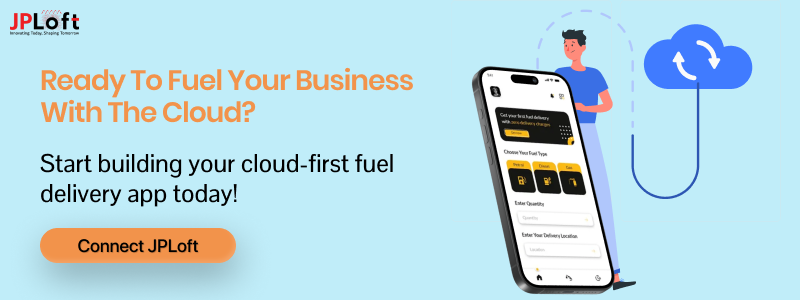
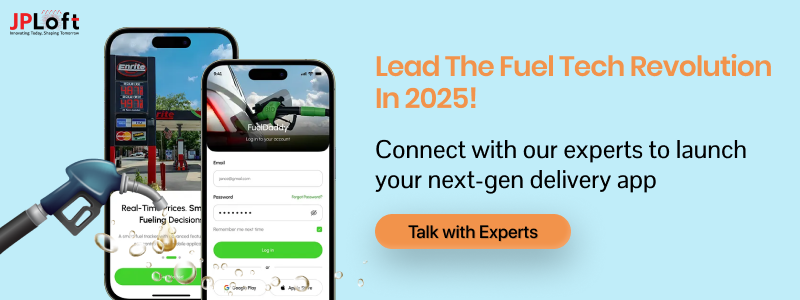

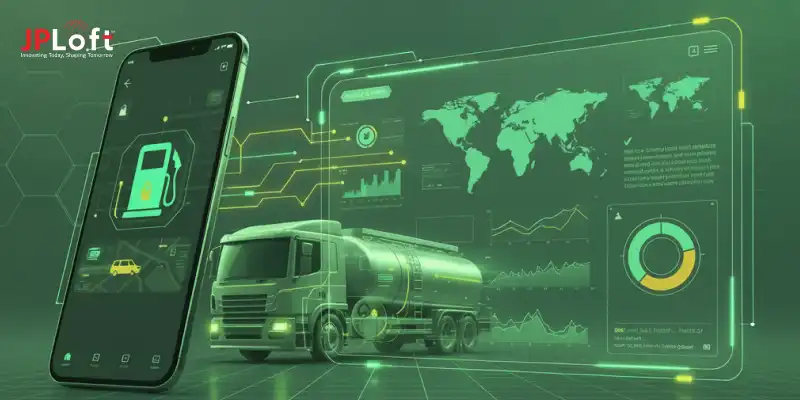
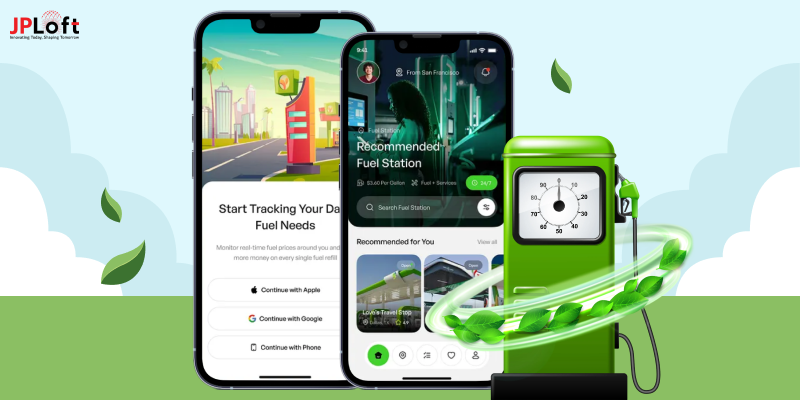
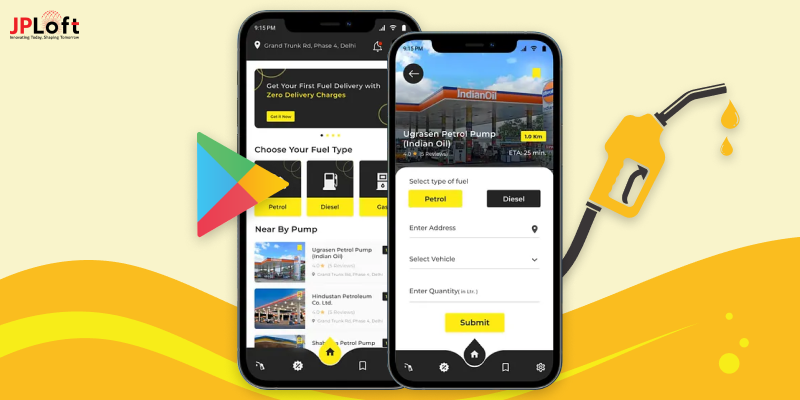


Share this blog